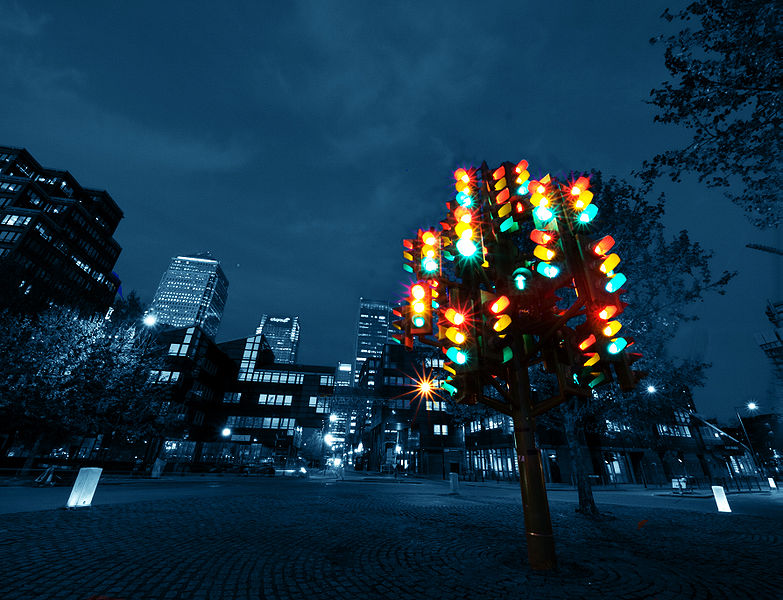London Residents Bid Au Revoir To The Traffic Light Tree
Posted by Amit Soni on 27th Jan 2012

It was the untiring ebb and flow of city life that French sculptor Pierre Vivant cited as his inspiration for creating the Westferry Traffic Light Tree in 1998.
The faux-naturalistic set of blinking traffic signals was certainly one of London’s most unusual sculptures and, on occasion, even had a tendency to lead unwitting motorists astray. However, last month the hydra-esque stop-and-start was uprooted from its home in Canary Wharf to make way for, of all things, roadworks!
High Ideals
The 26-foot tall sculpture was introduced in 1998, and replaced one of the roundabout's native plane trees that were being systematically choked to death by urban pollution.
The sculpture’s 75 computerised traffic signals were originally intended to display fluctuations in the London Stock Exchange, but the idea was subsequently abandoned after it proved too expensive.
“The Sculpture imitates the natural landscape of the adjacent London Plane Trees, while the changing pattern of the lights reveals and reflects the never ending rhythm of the surrounding domestic, financial and commercial activities,” explained Vivant.
In early December of 2011 the sculpture was removed by its owner, Tower Hamlets Council, as part of remodeling work to the Westferry roundabout. Since then, the Tower Hamlets community has been up-in-arms about the loss of a treasured piece of their cultural heritage.
In 2005, the roundabout was named the one of the country's favourites by a national opinion survey, commissioned by Saga Motor Insurance.
Energy-Saving Potential
In ‘light’ of its former position and due to one of its ideological remits, the sculpture’s impact might have been heightened had the artist chosen to utilise energy-efficient LED lighting for his installation.
Traffic lights have traditionally used incandescent, halogen bulbs. However, due to their poor record of energy-efficiency and comparatively short life expectancy, local authorities all around the UK are increasingly retrofitting traffic signals with LED arrays that consume less power and last many times longer.
London is now in the process of upgrading its 6,200 traffic signals to LEDs, which promises to reduce the city’s energy-consumption, set aside for this purpose, by up to 60%.
To put this into perspective, LED traffic lights generally use between 9 and 25 watts of electricity, compared to the 75 to 150 watts used by an incandescent signal.
Assuming a cost of 6.5 pence per kWh, converting just 100 red signals to LEDs would save approximately £2,100 every year so, when extrapolated to include London’s 18,600 individual red, amber and green traffic lights, the savings will amount to an unbelievable £400,000 per year!
Whilst halogen traffic signal bulbs needed to be replaced once a year, the new LED lighting with its average 50,000 hour life-expectancy will only need to be changed once a decade, drastically cutting the cost of maintenance.
This also results in far fewer emissions, in turn resulting in an approximate 9,500 tonne reduction in the production of CO₂ which is about the same weight as 812 London double-decker buses!
To mitigate Pierre Vivant’s failure to make use of energy-efficient LED lighting technology, it was still in its virtual infancy when his sculpture was first conceived. However, if the adroit Frenchman is reading this, we definitely advise him to implement it for all his future installations, as it’s all grown up, now and ready to save you money!





